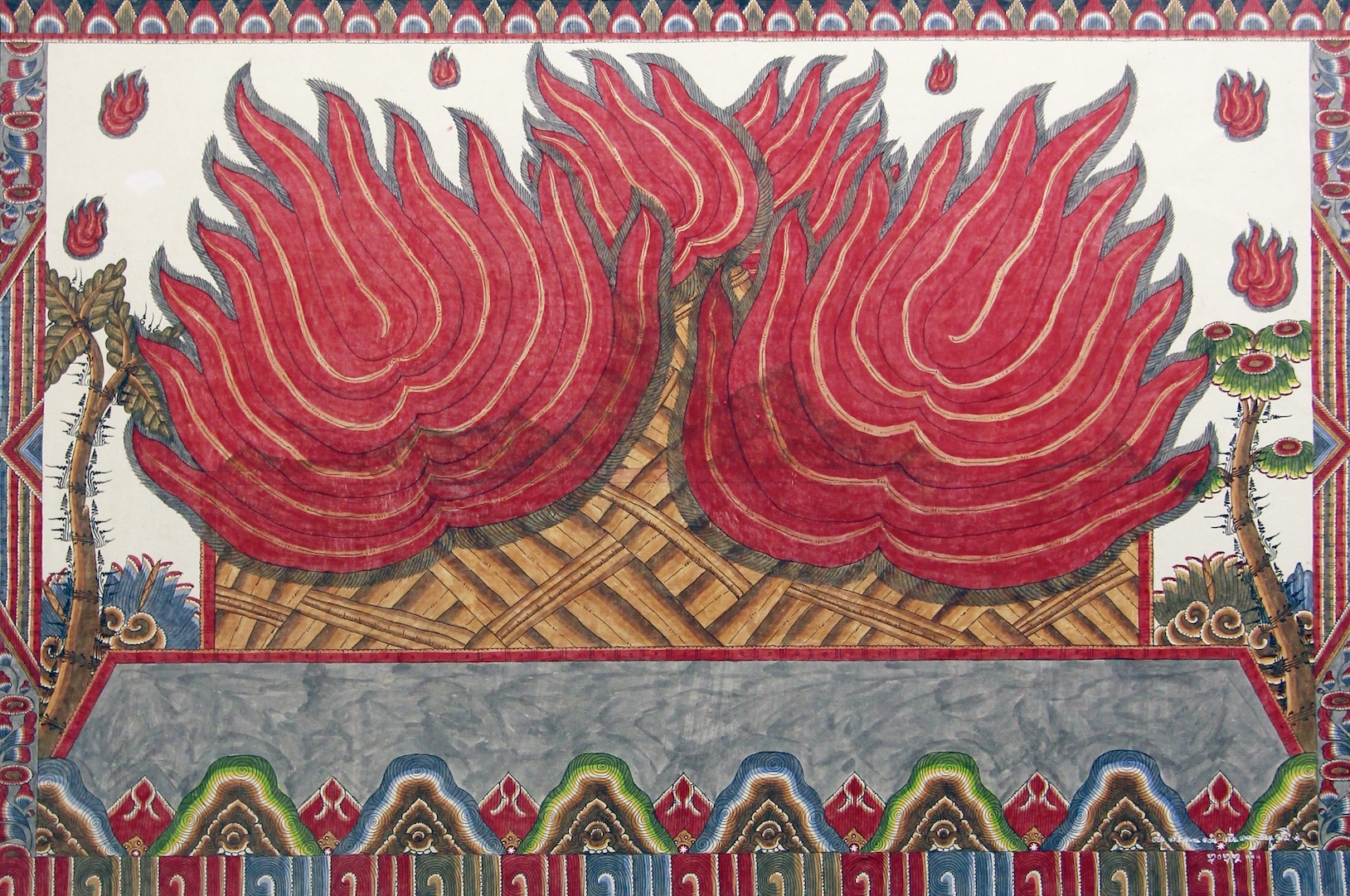
One of 2023s most significant art exhibitions has recently closed. YEAR OF THE TIGER, a presentation of paintings by Balinese priestess Mangku Muriati at BIASA Art, Ubud, in collaboration with V-Room Bali and Honold Fine Art, ran from 3 September – 25 November 2023.
Mangku Muriati is an internationally renowned traditional painter of the sacred religious Kamasan images and contemporary narratives. Kamasan, also known as Classical and Wayang paintings adorn temples, palaces and the houses of aristocracy throughout the island. (Mangku denotes the title of temple priest)
In Bali, where the veil between the seen and the unseen worlds is slight, the invisible world of the ancestors, nature spirits, and the gods play equally as vital a role as the physical. Traditional life is shrouded in mystery under the sovereignty of often hostile omnipotent energies in the eternal interaction of opposing positive and negative divine universal forces.
Kamasan paintings translate esoteric information into a language that may deciphered into functional knowledge to help navigate the challenges of daily life. The paintings are symbolic codified systems, all measurements and proportions unified with natural divine ratios. The artist functions as a medium by describing the multitude of narratives from sacred Hindu and Buddhist texts, along with local mythology and folk tales. The paintings also depict birth and astrological charts.
Born in 1966 in Banjar Siku, Kamasan village, Klungkung, East Bali, Mangku Muriati is the daughter of Mangku Mura (1920-1999), who is considered one of the foremost Kamasan artists of his generation. During her childhood, she assisted him in colouring paintings and began learning the traditional techniques and narratives. What distinguishes Mangku Muriati is that she also academically trained at the Udayana University Faculty of Fine Art and Design in Denpasar and learned modern painting techniques and discourses between 1987 and 1993.
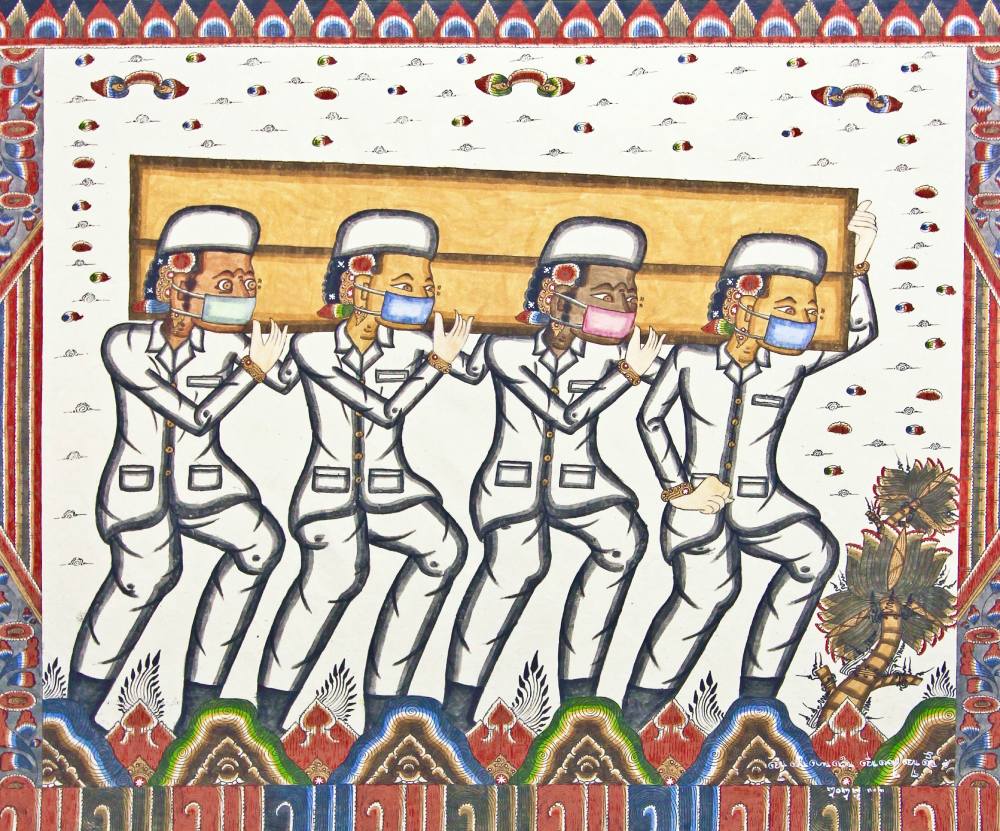
At the age of 32, Mangku Muriati was appointed as priestess at her local temple. During the past three decades, while also creating traditional works on canvas and plywood for the cultural requirements of her community, she has been painting contemporary narratives within the conventional format. She frequently paints new stories she has heard on the radio or seen on television. Only recently, she has begun painting portraits of friends and herself which is a noteworthy development within the contemporary sphere of her practice.
In YEAR OF THE TIGER, she presented ten paintings of various sizes in acrylic paint on canvas created between 2021-2023. The exhibition title was chosen, referencing 2022 to denote the end of the global pandemic. The compositions are neutral observations, without comment, criticism or emotion of crisis years when many Balinese suffered. This landmark event in Balinese painting and Mangku Muriati’s first solo exhibition results from a specific dialogue between the artist and the founders of V-Room Bali, artists Fendry Ekel and Marco Cassani.
‘Carriers’ describes four white-robed medical workers, wearing gloves and masks, carrying a coffin upon their shoulders. Repetition of patterning distinguishes the work in the decorative icons that frame the image, the figures, and the atmospheric icons. Each character is distinguished with differing facial skin tones. The message of death, softened by the painting’s vibrant beauty, prevails.
The painting titled ‘2022’ reveals a doctor injecting a person with a syringe. Beautiful white negative spaces juxtapose side-by-side with the narrative’s vibrant descriptive elements. ‘Ambulance’ depicts the emergency vehicle, which, with its flashing lights and siren, was a typical scenario during the pandemic. Beautiful bird icons above the ambulance lighten the message of tragedy.
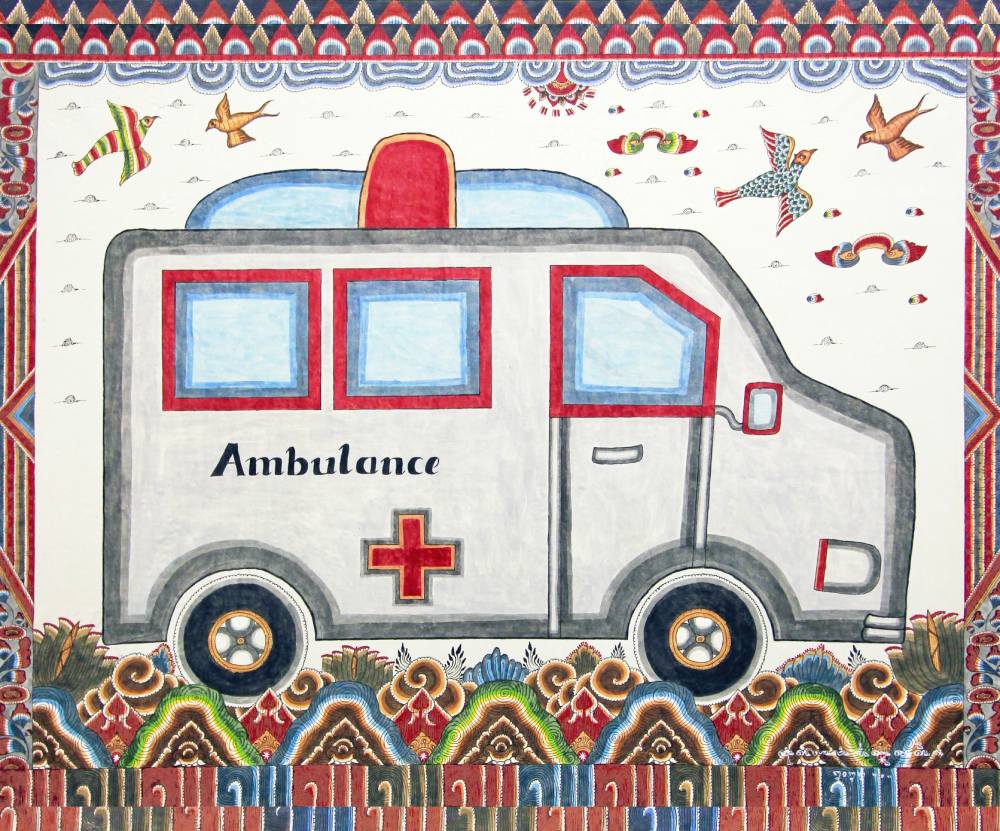
Mangku Muriati’s style has been influenced by her father’s innovations: “Mura pushed the limits of the Kamasan tradition towards a style that was almost caricatured, just as he invented idiosyncratic new narratives and variations on new narratives.” Wrote Adrian Vickers, Professor of SE Asian Studies at Sydney University. “While other artists were moving towards single-scene works and simpler compositions, Mangku Mura created newer and more complex layering of scenes.”
‘The Reincarnation #1,2 & 3’ feature the all-consuming essence of fire. According to the Balinese, fire and its symbolic power as a metaphor for energy is one of the sacred elements, along with water, earth, air and ether. Mangku Muriati narrates fire as the representation of the end and new beginnings, the essential element in reincarnation in the human life cycle. These profound compositions invite contemplation of the power and beauty of fire and its crucial role in destruction and creation – life and death.
‘Traveler’ is a stunning composition of balance and precision, rich in visual rhythms. The painting is a departure in composition structure, without blank spaces, depicting a person lying prone on a grass mat upon a tiled floor, the body concealed in a decorative cloth. The graphic style is characterized by many fine lines, vertical and horizontal, diagonal, wavy and curved, defining details and the borders of the colorful decorative icons throughout.
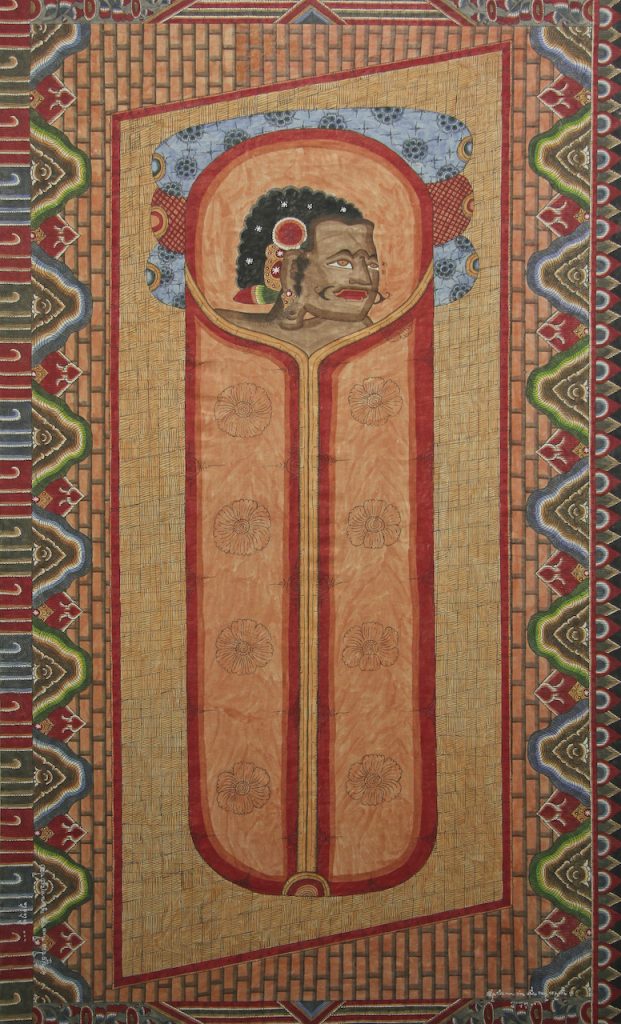
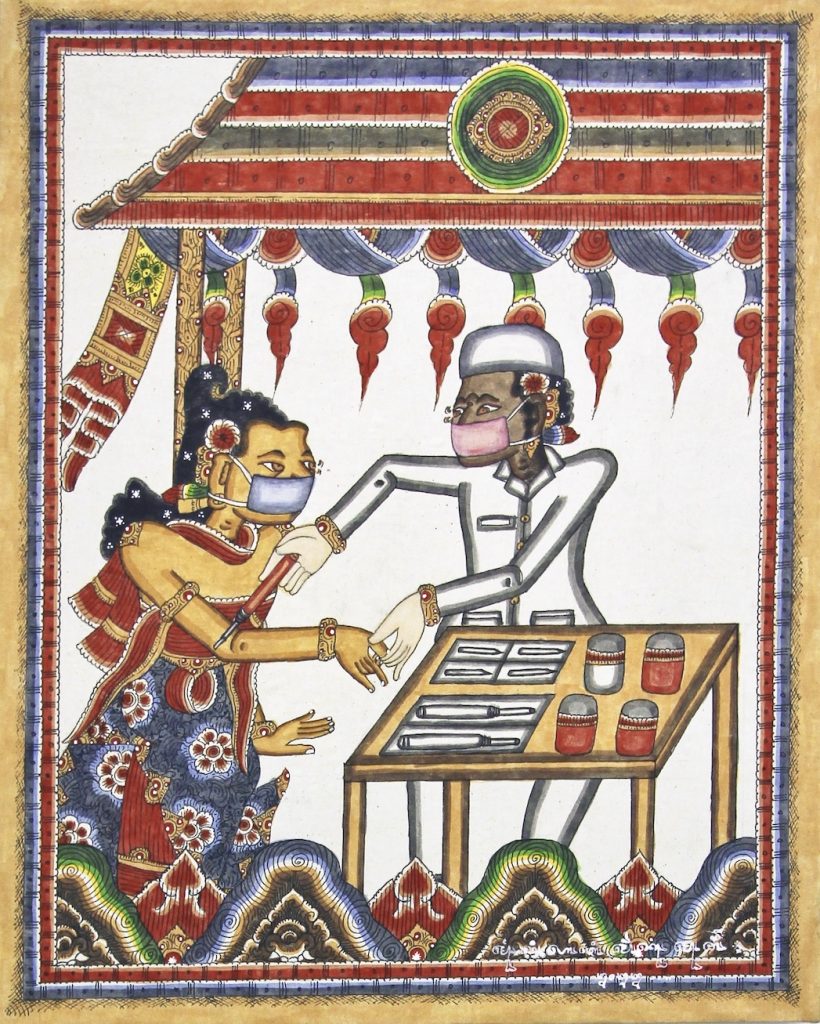
The artist directs the observer’s eye traversing the canvas from top to bottom and left to right. The visual rhythms evolve from the flowing curves of the decorative border to the tension of the tightly defined lines in the tiles and mat, leading our attention to the gentle coloured space that envelopes the subject’s head, which appears to be enshrined within a halo.
“I painted this composition because I was inspired by seeing people who died from Covid, whose bodies could not be seen, let alone touched and hugged as a sign of farewell,” Mangku Muriati told NOW! Bali Magazine. “I experienced fear, anxiety and tension during the pandemic. Along with curiosity, I also wondered whether this pandemic really exists and, if so, when will it end. By describing my observations, all feelings of fear, confusion and sadness suddenly disappeared, and I could work as usual,” she said. “My philosophical view of the pandemic is that we have received a warning from God Almighty so that we can be introspective and not forget God’s power.”
“If asked whether I enjoy the role of contemporary painter more than traditional, my answer would be yes because then I have my own identity. I enjoy portraying events and themes that have never been depicted within the traditional format, even though the difficulty level is greater,” Mangku Muriati explained. “I feel proud of my contemporary work. But in my daily life, my responsibilities are to my community as a traditional painter. The Kamasan style is ingrained in me, which is also a cultural obligation to the Kamasan community inherited from my family from generation to generation and is my principal capital, which I must take excellent care of.”
“Mangku Muriati’s work represents the perfect synthesis between tradition and contemporaneity, between the community and the individual, between what you initially belong to (tradition, country and family) and the personal space you have created for your existence,” Marco Cassani told NOW! Bali Magazine. “In Mangku Muriati’s paintings, the artwork becomes a point of reference from which to become aware of our place in the universe.”









